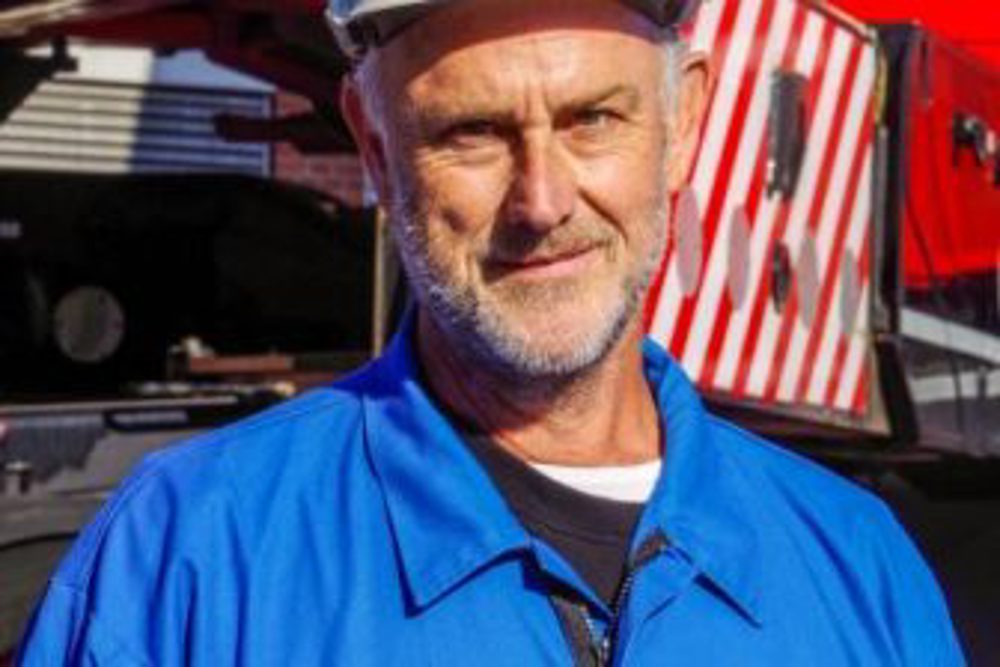
Wagenborg: 'skidding' at rail project in Leverkusen
This article was previously published on Infrasite, the online platform for the Dutch infrastructure sector
Eisenbahnüberquerung
The scope of this project was to renovate and extend the existing railway track at the site. Wagenborg had been awarded the contract to remove the existing single track from the railway viaduct EÜ Willy Brandt Ring. EÜ stands for 'Eisenbahn Überquerung'. This was an 80-tonne viaduct. It was decided to remove it with SPMTs. Next came the installation of a new 350-tonne double-track viaduct (EÜ Carl Rumpff Straße). Again, this was done by using SPMTs.
After that, the "piece de resistance" followed: the installation of a 1500-tonne double-track viaduct. The SPMTs could remain on the side during this action because this heavy duty movement was performed by a so-called jacking and skidding operation.


Teflon
Question to senior project manager Peter Eijffius: what kind of technique is that?
'The so-called skidding technique has been around for a long time. In earlier times, it involved shifting loads over wooden skidding tracks. These were covered with green soap to reduce the sliding resistance. Nowadays, skid tracks are made of steel profiles. Green soap in solid form no longer comes into play, but it does in liquid form. The profiles are fitted with Teflon lining strips, which make the track smooth so loads can easily move. These profiles are connectable so a skidding track with variable lengths can be assembled.'

Peter continues: 'We move the load with hydraulic cylinders that clamp themselves to the profiles. In each movement, the cylinders shift the load over a length of about 1 meter. At the end of the shift, the clamping of the cylinders to the profiles is released. Then the cylinders retract to clamp to the profiles again, so another 1 meter can be shifted.
Depending on the weight and dimensions of the load, we determine the number of skidding tracks and cylinders. In order to move the 1500-tonne viaduct, we built four skidding tracks.
Method statement
You are in charge of the project realization. In which stage and how long in advance were you involved in the project?
Eijffius: 'For this project, I was involved right from the tender phase. All in all, you're talking about a year's preparation including site visits, developing concepts, reviewing these, drawing up calculations, preparing bids and negotiating contracts. And then the preparation for the whole operation has yet to begin!

'During the final implementation, I always try to be there for a few days.'
To what extent is the implementation plan fixed? What influence do you still have as project manager?
'At the time of execution, the overall plan is fixed. But in this particular case, we had to adjust our concept 3-4 months before execution. The idea was that the 1500-tonne viaduct would be moved in with SPMTs. However, that plan was eventually not approved because there were some underground pipelines. So, in close cooperation with the client, we adapted our concept. Instead of rolling with SPMTs, we switched to a skidding operation.'


Limited set-up space
Wagenborg does not arrive at a job like this unseen. For the Leverkusen project, more than 280 tonnes of equipment was brought in by truck from the Netherlands. The crew was then able to get to work with a 100-tonne gantry system, a 1600-tonne skidding system, a 100-tonne mobile crane, an entire battery of SPMTs and lots of auxiliary steel. The job took 12 days and the project team consisted of 8-10 men. 'An additional challenge during the execution of the project was the very limited setup space in the heart of Leverkusen,' says Eijffius.
Is the execution still exciting or is such a project cut-and-dried by now, to put it bluntly?
'There is always a healthy dose of tension, especially during the moments when the loads are picked up by the SPMTs or the skidding system. Furthermore, there is always time pressure to ensure everything is ready for execution on time. Fortunately, we have a very experienced crew on site who deal well with this time pressure and work very closely with the client so the project runs smoothly.'
Safety
You hoist and move large structures of sometimes hundreds of tonnes. If things were to go wrong, there could be major damage or a road or railway line could be blocked for a long time. Is that something you think about during execution?
Eijffius: 'During preparation, we review the potential risks to the surrounding area, our own employees and other parties' equipment and take appropriate measures to minimize those risks. A safe execution is paramount, both for our own employees and for everyone on or near the construction site. After all, everyone going home safely again is priority number one.'

'Everyone going home safely again is priority number one.'

Teamwork
What is the atmosphere like during such a day, between you as a team and with the contractor's employees?
'The mood during the execution of the entire project is very good, both during the preparations, the execution and the subsequent dismantling. We have already carried out several works together with this client, which definitely contributes to that.'
Will there be any celebrations or beer drinking to the happy ending after the completion or is that not part of it?
'That is definitely part of the job and it is also a regular tradition, of course together with the client's team.'